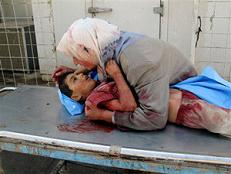Israeli Use of Painful Shackling As A Form of Torture

Founded in 1990 to highlight a growing problem, the Public Committee Against Torture in Israel (PACTI - stoptorture.org) "believes that torture and ill treatment of any kind and under all circumstances is incompatible with the moral values of democracy and the rule of law. (It) advocates for all persons - Israelis, Palestinians, labor immigrants and other foreigners in Israel and the Occupied Palestinian Territories (OPT) - in order to protect them from torture and ill treatment by the Israeli interrogation and law enforcement authorities."
They include the Israeli Police, the General Security Service (GSS), the Israeli Prison Service (IPS), and the Israeli Defense Forces (IDF). In June 2009, PACTI published a report titled, "Shackling As A Form of Torture and Abuse." Its findings are discussed below.
PACTI reviews the "serious phenomenon" of shackling Palestinian detainees "in a systematic manner and throughout all stages of detention and interrogation." Its purpose is to dehumanize and inflict pain, suffering, punishment, intimidation, and discrimination as a way of lawlessly extracting information even though experts acknowledge that torture is ineffective, counterproductive, and, of course, illegal under all circumstances at all times with no exceptions allowed ever.
Israel's use of shackling "has snowballed almost out of control....even when it serves no real" purpose, and it begins at the time of arrest. Plastic handcuffs are used "that can be tightened but cannot be released or halted." They inflict pain, especially when hands are cuffed from behind, the most common way.
Shackling continues during interrogation, "where diverse and creative forms of cuffing are intended to apply pain and pressure...." Then in cells, detainees are painfully shackled to beds for extended periods. Even when they're transfered for urgent hospital treatment, cuffing stays in place throughout.



























